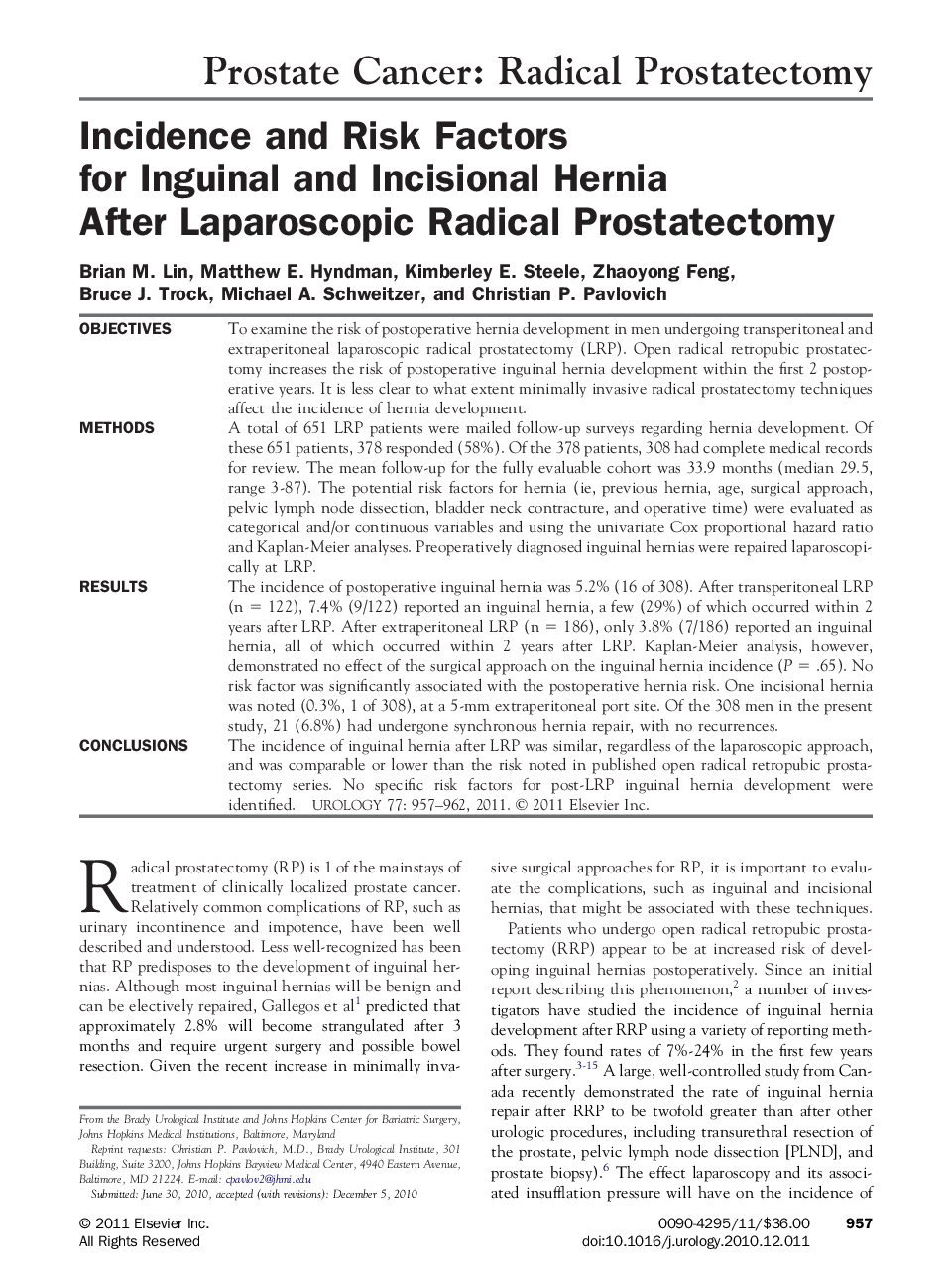| Article ID | Journal | Published Year | Pages | File Type |
|---|---|---|---|---|
| 3902553 | Urology | 2011 | 6 Pages |
ObjectivesTo examine the risk of postoperative hernia development in men undergoing transperitoneal and extraperitoneal laparoscopic radical prostatectomy (LRP). Open radical retropubic prostatectomy increases the risk of postoperative inguinal hernia development within the first 2 postoperative years. It is less clear to what extent minimally invasive radical prostatectomy techniques affect the incidence of hernia development.MethodsA total of 651 LRP patients were mailed follow-up surveys regarding hernia development. Of these 651 patients, 378 responded (58%). Of the 378 patients, 308 had complete medical records for review. The mean follow-up for the fully evaluable cohort was 33.9 months (median 29.5, range 3-87). The potential risk factors for hernia (ie, previous hernia, age, surgical approach, pelvic lymph node dissection, bladder neck contracture, and operative time) were evaluated as categorical and/or continuous variables and using the univariate Cox proportional hazard ratio and Kaplan-Meier analyses. Preoperatively diagnosed inguinal hernias were repaired laparoscopically at LRP.ResultsThe incidence of postoperative inguinal hernia was 5.2% (16 of 308). After transperitoneal LRP (n = 122), 7.4% (9/122) reported an inguinal hernia, a few (29%) of which occurred within 2 years after LRP. After extraperitoneal LRP (n = 186), only 3.8% (7/186) reported an inguinal hernia, all of which occurred within 2 years after LRP. Kaplan-Meier analysis, however, demonstrated no effect of the surgical approach on the inguinal hernia incidence (P = .65). No risk factor was significantly associated with the postoperative hernia risk. One incisional hernia was noted (0.3%, 1 of 308), at a 5-mm extraperitoneal port site. Of the 308 men in the present study, 21 (6.8%) had undergone synchronous hernia repair, with no recurrences.ConclusionsThe incidence of inguinal hernia after LRP was similar, regardless of the laparoscopic approach, and was comparable or lower than the risk noted in published open radical retropubic prostatectomy series. No specific risk factors for post-LRP inguinal hernia development were identified.
